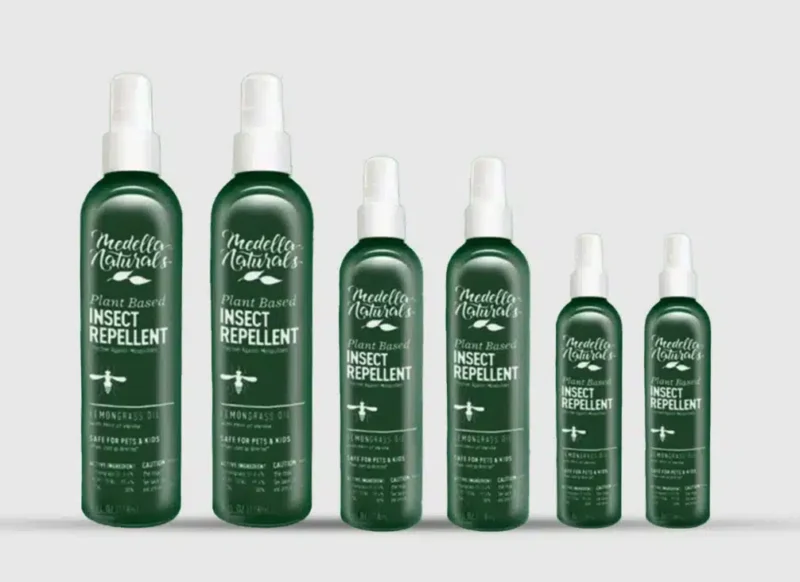Did you know that our planet is teeming with an incredible ten quintillion insects at any moment? That’s a staggering number, amounting to over 200 million bugs for every individual on Earth. While this information may seem overwhelming, there’s no need to panic.
You can easily keep your home free of bugs by using natural insect repellents that you might already have in your pantry. These simple yet effective solutions can be your new go-to allies in warding off pesky insects and maintaining a bug-free living space.
9 Eco-Friendly Ways To Repel Bugs
Let’s explore these effective natural bug repellents:

1. For Ant Problems
When ants invade your space, turn to cream of tartar, a common culinary pantry item. While it’s known for stabilizing egg whites and whipped cream, it is also a potent ant-repellent. Create a barrier by placing a line of cream of tartar where ants typically enter your home, and they will avoid crossing it.
2. To Repel Crawling Bugs
Vinegar, another household staple, helps deter crawling bugs like ants and spiders. It is important to note that crawling bugs can pose a real danger, especially if you have a habit of sleeping on the floor. It’s important to prevent these bugs from entering your sleeping area and ensure you sleep in a safe and pest-free environment.
Mix vinegar and water of the same quantity in a spray bottle to wipe down surfaces, keeping bugs away and providing a disinfectant effect. To tackle fruit flies, place cider vinegar and water in a small bowl, cover it with plastic wrap, and puncture several small holes using a toothpick to trap the flies.
3. For Fleas, Spiders, Silverfish
Small cedar blocks or sachets filled with cedar chips deter various bugs, including fleas, spiders, Silverfish, certain ants, moths, cockroaches, termites, and even some flies. Placing cedar in closets, cabinets, drawers, or entry points creates a natural bug-free zone.
4. For Fleas, Stinkbugs, Cockroaches
Diatomaceous Earth (DE) is a fossilized algae powder that’s non-toxic to humans and pets but lethal to bugs with exoskeletons, such as fleas, earwigs, stinkbugs, and cockroaches. DE contains microscopic shards that pierce a bug’s outer shell, causing it to dehydrate. Always opt for “food-grade” DE.
5. To Repel Moths, Ants
Cinnamon, a beloved kitchen spice, repels mosquitos, ants, moths, spiders, and other insects. Use cinnamon sticks in closets, cupboards, or bug-prone areas. Sprinkle cinnamon powder on windowsills and doorways, or mix a few drops of essential cinnamon oil with water and spray it in cracks and corners to keep bugs at bay while making your home smell delightful.
6. For Silverfish
To deter Silverfish, place whole cloves in drawers, closets, or any area where you’ve spotted them scurrying. These pesky bugs can’t stand the smell of cloves.
7. Repels Mice
Cotton balls infused with a few drops of peppermint or eucalyptus essential oils serve as effective mouse deterrents. Please place them in areas frequented by mice, such as your car, closets, drawers, attics, and near outdoor openings.
8. To Repel Spiders
Spiders have an aversion to citrus scents. Rub leftover citrus peels along windowsills and doorways to keep them out. Alternatively, soak orange peels in white vinegar overnight, then use the infused vinegar as a cleaning agent or spray it in high-traffic bug areas.
9. For Beetles And Mosquitoes
Garlic essential oil is an effective insect repellent against beetles and mosquitoes. It has been found to decrease the attraction of mosquitoes to human scent. The garlic essential oil works well as a mosquito repellent during the first 30 minutes following application.
Conclusion
These natural bug repellents help maintain a bug-free home and provide alternatives to chemical pesticides, promoting a healthier and eco-friendly living environment. By incorporating these natural methods into your pest management routine, you can enjoy a bug-free environment while minimizing exposure to chemical pesticides.
Frequently Asked Questions
How often should I reapply these natural bug repellents?
Reapplication frequency depends on the repellent type and bug severity. Essential oil-based repellents may require more frequent application than substances like diatomaceous Earth. It’s advisable to follow the specific instructions for each repellent.
Can I use these natural bug repellents indoors and outdoors?
Many of these natural bug repellents can be used indoors and outdoors. For indoor use, consider methods like cedar sachets or cloves. Outdoors, you can use citronella candles, essential oil sprays, and other repellent plants.
Do these natural bug repellents work for all types of bugs?
Different repellents have varying degrees of effectiveness against specific types of bugs. For example, cedar is effective against fleas, spiders, and moths, while diatomaceous Earth is excellent for fleas, stinkbugs, and roaches. It’s essential to choose the right repellent for the particular bug problem you’re facing.

